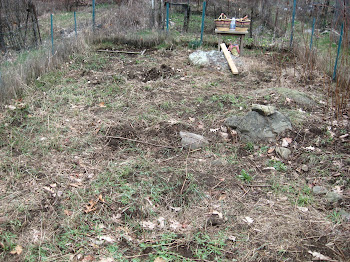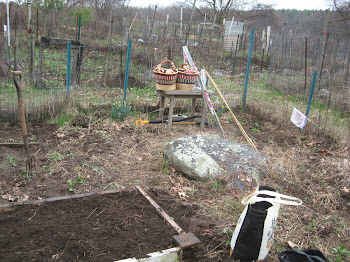What do murex snails, fugitive dyes, and my purple beans this season all have in common? Stay with me here, I'll get to it.
I've been reading a number of books about color. How is it used in dyes, paints, pigments, and even in food; where did we get the original dyes that we now take for granted through modern chemistry? Why do some fade ("fugitive") or change color over time or exposure to light? How do I know which type of paint I'm buying when I fill my palette?
Some of these questions are issues covered in varying depth when you attend art school; there's a great reference book on nearly all art materials that helps us discern the right material for the project, depending on lighting conditions, indoor or outdoor work, the anticipated lifespan of the piece, etc. Among other handy issues it covers is the fact that the
American Society for Testing and Materials (ASTM) has a ratings and testing system for artists' paints and dyes, so that you have some idea of the lifespan, color-fastness, and toxicity of the material you'll be using. One of the more memorable seminars I sat through as a freshman at art school was when a speaker came from
Occupational Safety and Health Administration (OSHA) to speak with us about our relative exposure to toxic materials. Artists' materials (whether it's paints, photo processing chemicals, solvents, pastels, plaster and clay dust, glass or metal fumes from blast furnaces, etc.) are simply not rated for our exposure levels. Those ratings were developed based on a casual exposure (a few hours per year, for example) rather than how many hours per DAY a working artist will be using any or all of these materials. It was discouraging to learn how hazardous everything was, but on the other hand at least I learned that I can take some sensible precautions to minimize the risks. All professions have hazards of one kind or another, and I was glad someone in the program had sensibly gotten someone to address the topic for us.
That said, The Artists Handbook of Materials is the reference book I was talking about. It's not a narrative but a dry, utilitarian reference book when you have a project to plan.
The other titles I've been reading are all about the history of the use and development of pigments. I started by reading
Color: A Natural History of the Palette which is a great read that discusses how each of the various hues were found (stones, shells, plant extracts and fermentation, and even the 'tears' from certain snails) and stabilized in order to color fabric and affix images from the stone age onwards. The royal purple was a truly exorbitant dye to manufacture, and the city that first specialized in its production had a monopoly. Aboriginal paintings are considered by their artists to be a very sacred act of creation of the subject of the story - invoking the life form or spirit that is depicted - and the substitution of another source of ochre or natural pigment - even if it has the same color - is unacceptable in the extreme, partly because what makes that ochre sacred is the journey taken to obtain it in the first place - complete with remembered and recited history songs. More recent stories include the development of stable chemical dyes and pigments, and the artists who did - or did not - care to use non-fugitive paints.
Part of what launched me on all this color history research was my curiousity about what causes some plants to develop such gorgeous, if unusual, colors - like purple string beans, red carrots, and so on - only to lose that color once you cook them. I love growing the funny colored vegetables, but it does seem a shame not to be able to keep the color. Certainly if you've ever made potato salad with those "Peruvian Blue" potatoes, you'll get a purple salad! Likewise, you'll get a real strange surprise if you make cole slaw and the only cabbage you have on hand is the red variety. (Don't do this. Trust me. It tastes just as delicious - but the color is so disturbing. I had to put up with jokes about Pepto-Bismol all through dinner that night.)
I think I'll continue to read about vegetable dyes through the winter. If you have any other titles to recommend, drop me a line.














2 comments:
I highly recommend "Wild Color" by Jenny Dean. It's a practical hands-on guide to dyeing with plants, including how to grow, process, collect, store, and use the plants to get a variety of shades with modifiers and mordants. Plus, pretty pictures!(Full disclosure: I have no tie, personal, financial, or otherwise, to Ms. Dean or the book. I just really like to dye things with my five year old.)
Hi there, Thanks for the recommendation! (I would still have been happy for it even if Ms Dean was a friend of yours.) I'll check out that title soon!
Post a Comment